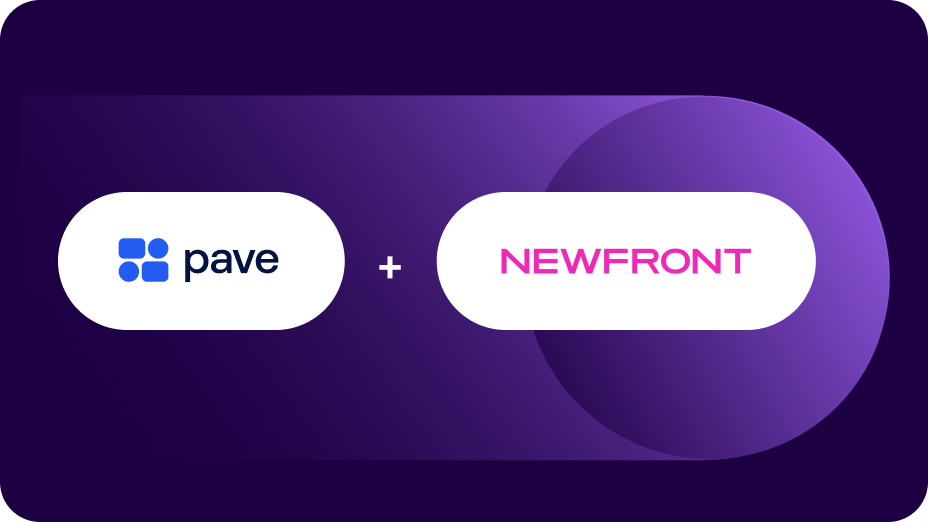Conversations about pay transparency have skyrocketed in the past few years, and for good reason. When approached thoughtfully, pay transparency can positively impact hiring and retention efforts.
“We’ve been living in an interesting time when it comes to pay transparency, experiencing dual forces from legislation and the culture coming out of that legislation – employees are pushing us to become more transparent,” said Katie Rovelstad, Head of New Verticals at Pave. “But transparency isn’t just a switch you can flip, it must be done intentionally.”
Understanding the ins and outs of pay transparency is easier said than done, so we’re here to help. Keep reading to learn how companies are approaching pay transparency and how it can be used as a strategic lever to attract and retain top-tier talent.
What is pay transparency?
Let’s start at the beginning.
Simply put, pay transparency involves publicizing salary ranges, and it’s required by many state and local laws. For example, here are just a few of the cities and states that currently have pay transparency legislation:
- California
- Colorado
- Illinois
- Nevada
- New Jersey (specifically Jersey City)
- New York
- Ohio (specifically Toledo and Cincinnati)
- Washington
- Washington DC
While local and state laws encourage salary visibility, they aren’t perfect.
Public salary bands don't (and aren’t required to) include equity compensation, which is often a big component of tech salaries. Many employees are willing to make salary tradeoffs in exchange for greater equity. And, salary ranges are often too broad to be helpful ($19k - $372k for a Head of Marketing, for example).
“The spirit of the law is good, but in practice, the laws today don’t meet the mark," said Matt Schulman, CEO and Founder at Pave. "In tech, a lot of your comp comes from equity, and the law doesn’t mention equity compensation. And, it doesn’t consider how salary bands are coupled with job level, location, and function.”
Matt raised the topic of pay transparency on LinkedIn — see what the community had to say!
It’s important to note pay transparency encompasses much more than required legislation. It’s also the way organizations share information with employees about the company’s compensation philosophy. When companies are intentional in their approach to pay transparency, it increases trust and helps them source top-tier talent.
“Employees and candidates expect transparency, equity, and fairness. It’s not enough to just meet legal requirements. It’s a critical time to be a catalyst for positive change.”
– Tatyana Levit, Director of Global Compensation at Affirm
How are companies approaching pay transparency today?
Pay transparency is top-of-mind for most organizations, but not all companies take the same approach. Some businesses don’t discuss pay, others only comply with local and state legislation, and some offer in-depth pay visibility to employees and candidates.
According to a ZipRecruiter survey, 72% of employers share salary information in job postings, 10% do not share salary information, and 18% only publicize what is legally required.
TL:DR? Companies have a choice – they can turn up or down the dial depending on how they want to approach pay transparency.

What are the benefits of pay transparency?
Regardless of the approach, one thing is clear – when done well, pay transparency can pay dividends for companies. Pay transparency helps attract top-tier candidates and retain great employees. It creates an environment of trust and mutual understanding. It can also lead to a reduction in pay disparities and an improved negotiation process.
The data shows the impact of pay transparency, with SHRM reporting that:
- 82% of U.S. workers are more likely to consider applying to a job if the pay range is listed in the job posting
- 73% of U.S. workers are more likely to trust organizations that provide pay ranges in job postings over ones that do not
- 70% of organizations that list pay ranges on job postings say that doing so has led to more people applying to their postings
It’s clear that pay transparency is beneficial, but figuring out how to communicate with employees isn’t always easy.
How can compensation leaders communicate pay transparency?
Here are our top tips for discussing pay transparency and compensation philosophy with employees.
- Start with the executive team: Getting buy-in on your approach to pay transparency and comp philosophy is critical before communicating with individual employees. Make sure you speak with each department and determine who will have access to pay information, and set clear guidelines from the beginning.
- Segment your communication approach: Meet your audiences where they are. Some employees may want more in-the-weeds details and others may simply want to understand the pay philosophy at a high level. As Kaylyn Reid, Head of Total Rewards and Analytics at GoFundMe, shared, “Our ultimate goal in our pay transparency journey is to make sure that employees understand how their pay band came to be and feel confident that we’re being equitable across the board.”
- Make yourself available as a compensation leader: Provide resources, training, and 1:1 chat opportunities so that the entire organization feels supported and educated on the ins and outs of your approach.
- Provide different avenues for learning: Everyone consumes information differently. Be sure to communicate pay details in various ways – that may include presentations, an internal intranet page, coffee chats, or giving managers access to an interactive tool where they can model different pay scenarios. Having internal documents outlining your pay approach will “pay dividends over time as you get employee questions and can point them to a resource you’ve already created,” says Evan Salisbury, Head of Total Rewards at Ancestry.
{{mid-cta}}
One other communication nuance to consider? If you’re a global business, you may need to alter your approach to support different regions. New laws on the horizon may change how you tackle and communicate pay transparency.
Improve Compensation Communication with Pave
To attract and retain great talent, comp teams must develop robust pay transparency strategies, and communicate them effectively. These tasks are easier with the right tools.
Pave’s compensation management software helps leading organizations simplify communication. Nearly 80% of employees who use Pave report a stronger and more comprehensive understanding of their compensation. Tools like Total Rewards and Visual Offer Letter help comp leaders have better pay conversations with their teams.
Pave is a world-class team committed to unlocking a labor market built on trust. Our mission is to build confidence in every compensation decision.





.jpg)
.jpg)

